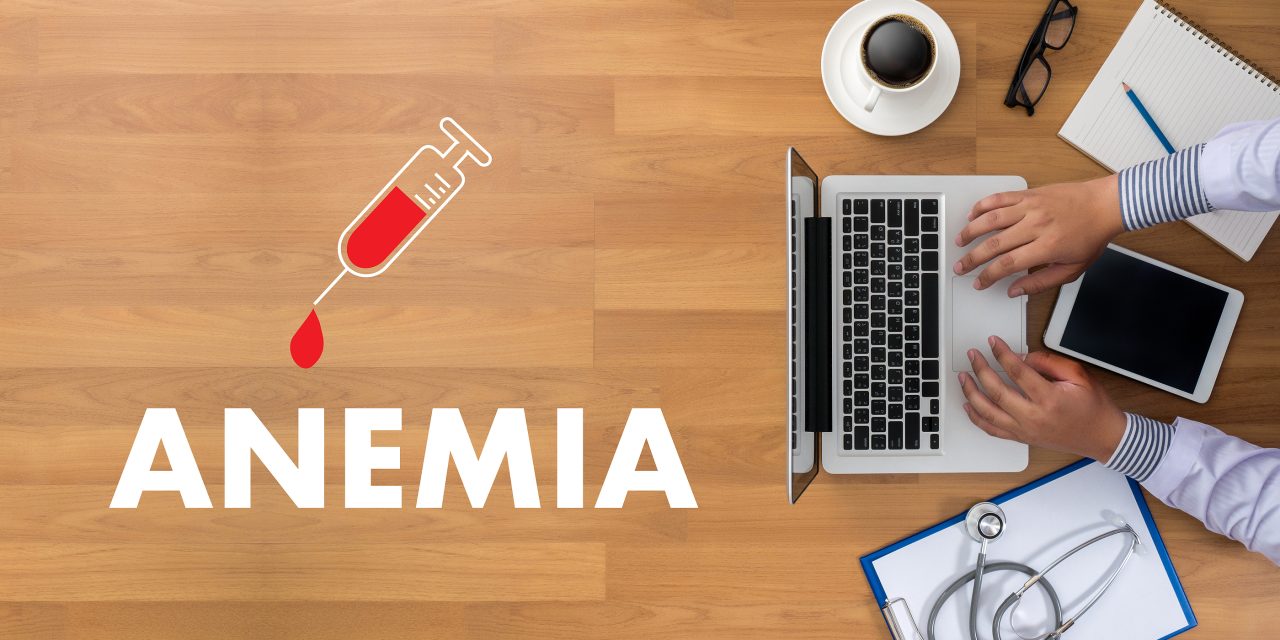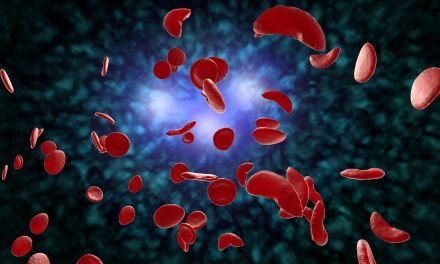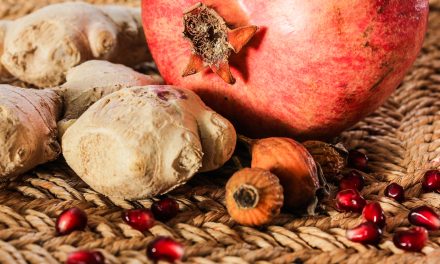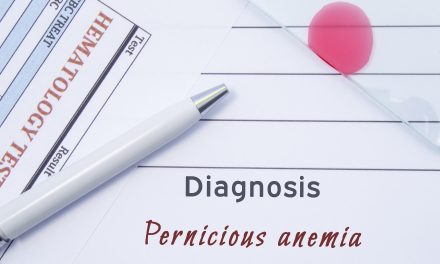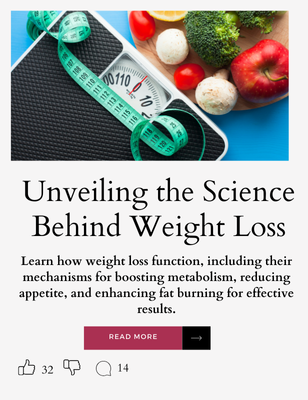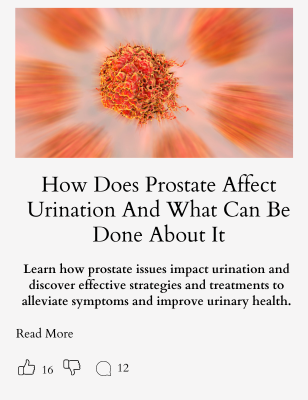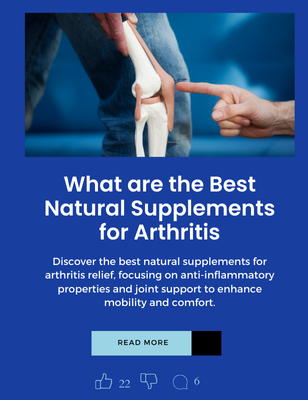Anemia is a medical condition characterized by a deficiency of red blood cells or hemoglobin in the blood, resulting in a reduced ability to transport oxygen throughout the body. This can lead to a variety of symptoms, including fatigue, weakness, and shortness of breath. The fastest way to cure anemia often depends on its underlying cause, as well as the specific type, whether it be iron-deficiency anemia, vitamin deficiency anemia, or anemia caused by chronic diseases.
Among the quickest methods to address the condition, dietary improvements play a pivotal role. Foods rich in iron, vitamin B12, and folic acid can help raise hemoglobin levels, while iron supplements might be prescribed to quickly boost iron stores in the body. Furthermore, proper vitamin and mineral supplementation can be crucial in supporting the body’s ability to absorb iron and produce healthy red blood cells. In more serious cases, medical interventions such as blood transfusions or medication to stimulate red blood cell production may be necessary.
Lifestyle changes, including regular exercise and quitting smoking, can improve an individual’s response to treatment and overall health, supporting the body’s recovery from anemia. However, it is essential to consult a healthcare professional to determine the appropriate treatment regimen, be aware of potential risks and complications, and understand the necessity of long-term management for certain forms of anemia.
Key Takeaways
- Addressing anemia quickly often necessitates a tailored approach including diet, supplements, and possibly medical treatments.
- Sustained lifestyle changes can aid recovery and enhance the effectiveness of anemia treatments.
- Professional medical advice is essential to identify the right treatment plan, monitor for complications, and manage anemia long-term.
Understanding Anemia
Anemia is a condition characterized by a deficiency in red blood cells or hemoglobin in the blood. Hemoglobin is crucial as it carries oxygen from the lungs to the rest of the body.
Causes
Anemia can result from three main causes:
- Blood Loss: Bleeding can reduce red blood cell counts.
- Decreased Production: An inadequate production of red blood cells due to lack of nutrients or bone marrow issues.
- Increased Destruction: Premature destruction of red blood cells.
Symptoms
Common symptoms include:
- Fatigue
- Weakness
- Pale or yellowed skin
- Irregular heartbeats
Diagnosis
Doctors typically diagnose anemia through:
- Medical history
- Physical examination
- Blood tests, such as Complete Blood Count (CBC)
Types
Key types of anemia include:
- Iron-deficiency anemia: Caused by a shortage of iron in the body.
- Vitamin-deficiency anemia: Due to a lack of vitamin B12 or folate.
- Chronic disease anemia: Associated with a long-term medical condition.
- Aplastic anemia: A rare but serious condition, where the body doesn’t produce enough red blood cells.
- Hemolytic anemia: Where red blood cells are destroyed faster than they are made.
Understanding the specific type of anemia is essential in determining the fastest and most effective treatment plan. Treatment may include dietary changes, supplements, medications, or procedures depending on the cause and severity of anemia. Regular monitoring and following a healthcare provider’s advice are key to managing the condition.
Dietary Changes
In managing anemia, incorporating specific nutrients into one’s diet is essential for increasing red blood cell production and enhancing iron absorption.
Iron-Rich Foods
A critical step in treating anemia is the consumption of iron-rich foods. Iron is a major component of hemoglobin, which is necessary for oxygen transport in the blood. The following table lists foods high in iron:
| Iron-Rich Foods | Iron Content |
|---|---|
| Red meat | High |
| Poultry | Moderate |
| Fish | Moderate |
| Beans and lentils | Moderate |
| Tofu | Moderate |
| Dark green leafy vegetables (spinach, kale) | Moderate |
| Fortified cereals and bread | Variable |
| Nuts and seeds | Low to Moderate |
It is important for those with anemia to integrate a variety of these foods into their daily diet.
Vitamin C and Iron Absorption
Enhancing iron absorption is as crucial as iron intake. Vitamin C greatly improves the body’s ability to absorb iron from plant sources. To maximize the effectiveness of iron uptake, it is beneficial to consume vitamin C with iron-rich foods. Sources of vitamin C include:
- Citrus fruits (oranges, grapefruits)
- Berries (strawberries, raspberries)
- Kiwifruit
- Bell peppers
- Tomatoes
- Cruciferous vegetables (broccoli, Brussels sprouts)
Regularly pairing these vitamin C-rich foods with meals containing iron can significantly aid in correcting anemia.
Iron Supplements
Iron supplements are a common and effective treatment for anemia, particularly when due to iron deficiency. They are available in various forms and strengths, with specific dosages aimed to restore normal iron levels within the body.
Types of Iron Supplements
There are two main types of iron in supplements — heme iron and non-heme iron.
- Heme iron is found in animal products and is more easily absorbed by the body.
- Non-heme iron is found in plants and iron-fortified foods and is less readily absorbed.
Iron supplements come in various forms:
- Tablets/Capsules
- Liquid
- Chewable
Ferrous sulfate, ferrous gluconate, and ferrous fumarate are among the most common compounds found in iron supplements, with ferrous sulfate often being recommended for its cost-effectiveness and high iron content.
Dosage and Administration
The dosage of iron supplements depends on the individual’s age, gender, level of iron deficiency, and the presence of any underlying health conditions.
For adults with iron deficiency anemia, typical dosages are:
- Ferrous sulfate: 325 mg (65 mg elemental iron) taken one to three times a day.
- Ferrous gluconate: 300 mg (35 mg elemental iron) taken one to two times a day.
- Ferrous fumarate: 100 mg (33 mg elemental iron) taken two to three times a day.
It is critical that individuals take iron supplements on an empty stomach to maximize absorption, or with a source of vitamin C to increase uptake. However, some may need to take it with food to avoid gastrointestinal discomfort.
Patients should not take iron supplements with dairy products, caffeine, or antacids, as these can interfere with absorption. Regular blood tests are needed to monitor iron levels and avoid iron overload. Always follow a healthcare provider’s advice on dosage and administration.
Vitamin and Mineral Supplementation
Correcting nutritional deficiencies is crucial for treating anemia. Vitamin B12 and folic acid are often supplemented to support red blood cell production when deficiencies are present.
Vitamin B12
Individuals with Vitamin B12 deficiency anemia require an increase in this nutrient. They may be prescribed high-dose Vitamin B12 supplements, typically administered as intramuscular injections or high-dose oral supplements depending on the severity of the deficiency. The standard treatment involves:
- Intramuscular injections: Administered daily or weekly until the deficiency is corrected, followed by injections every 1-3 months for maintenance.
- Oral supplementation: Ranging from 500 to 2,000 mcg daily.
Folic Acid
Folic acid supplementation is necessary for anemia caused by folate deficiency. Treatment usually includes:
- Oral folic acid: Dosage ranges from 400 to 800 mcg daily until levels return to normal. Pregnant women and individuals with increased requirements may need higher doses.
Lifestyle Modifications
In managing anemia, certain lifestyle changes can significantly impact one’s recovery speed. These modifications typically center around enhancing exercise, sleep, and stress management.
Exercise and Activity Levels
Regular physical activity can improve cardiovascular health and blood circulation, which may aid in the treatment of anemia. However, it is crucial to tailor exercise intensity to individual capabilities, especially when anemic symptoms are present.
- Mild to Moderate Exercise: Activities such as brisk walking, cycling, or swimming can help without overstraining the body.
- Monitor Activity Levels: Patients should monitor their tolerance to activity and adjust accordingly, avoiding excessive exhaustion.
Sleep and Stress Management
Adequate sleep and effective stress management are vital components that support the treatment of anemia.
- Restorative Sleep: Aim for 7-9 hours of quality sleep per night to aid the body’s healing processes.
- Stress Reduction Techniques: Strategies like mindfulness, meditation, or yoga can reduce stress-induced inflammation that may impede anemia recovery.
- Maintaining a Consistent Sleep Schedule helps in establishing a healthy sleep pattern, which is beneficial for overall well-being and recovery from anemia.
Medical Treatments
Medical treatments for anemia aim to increase the hemoglobin level and red blood cell count quickly and efficiently. These treatments directly address the underlying causes or provide immediate support to the patient’s circulatory system.
Blood Transfusions
Blood transfusions are a direct method to treat anemia by providing red blood cells from a donor. This treatment is typically reserved for severe anemia or when rapid improvement is necessary. Transfusions can:
- Increase hemoglobin levels immediately
- Improve oxygen delivery to tissues
Erythropoiesis-Stimulating Agents
Erythropoiesis-stimulating agents (ESAs) are medications that mimic the hormone erythropoietin, which stimulates red blood cell production in the bone marrow. These agents are often used in:
- Chronic kidney disease-related anemia
- Anemia caused by chemotherapy
| ESA Medications | Administration Frequency |
|---|---|
| Epoetin alfa | 1-3 times weekly |
| Darbepoetin alfa | Once weekly or biweekly |
Home Remedies
When dealing with anemia, there are several home remedies that may support the treatment plan prescribed by a healthcare professional.
Iron-Rich Foods: Consuming a diet that’s high in iron can be beneficial. Foods like red meat, dark leafy greens, legumes, and fortified cereals can contribute to raising iron levels.
| Food Type | Examples |
|---|---|
| Meat and Fish | Beef, chicken liver, oysters |
| Vegetables | Spinach, kale, broccoli |
| Beans and Legumes | Lentils, chickpeas, soybeans |
| Nuts and Seeds | Pumpkin seeds, cashews, almonds |
| Grains | Fortified cereals, whole grains |
Vitamin C Intake: Vitamin C helps with the absorption of iron. One could include foods such as oranges, strawberries, and bell peppers in their diet to enhance iron absorption.
Cooking with Cast Iron: Cooking with cast iron cookware can increase the amount of iron in food, especially when preparing acidic foods like tomato sauce.
Avoid Coffee and Tea with Meals: These beverages contain polyphenols which can inhibit iron absorption when consumed with meals.
Herbal Supplements: Some individuals consider taking herbal supplements like nettle leaf, dandelion, or yellow dock which are thought to support iron levels. However, it’s important to consult a healthcare provider before starting any supplement, as they can interact with other medications and may not be suitable for everyone.
Remember, these home remedies are supportive measures and should not replace treatments prescribed by a healthcare professional. Anemia can have serious health implications, and it’s vital to adhere to a treatment plan and monitor iron levels regularly.
When to See a Doctor
Anemia requires medical evaluation to determine its cause and appropriate treatment. Persistent or severe symptoms warrant a visit to a healthcare provider.
Signs of Severe Anemia
- Fatigue: Excessive tiredness that interferes with daily activities.
- Paleness: Noticeably lighter skin tone, particularly on the palms, nail beds, and eyelids.
- Shortness of Breath: Difficulty breathing or rapid breathing, especially with exertion.
- Heart Palpitations: Unusual awareness of the heartbeat, such as rapid, irregular, or strong beats.
- Chest Pain or Angina: Seek immediate medical attention, as this may indicate severe anemia or other serious conditions.
Regular Monitoring
- Chronic Conditions: Patients with conditions like renal disease or cancer may need regular tests to monitor hemoglobin levels.
- During Pregnancy: Pregnant individuals should have their iron levels checked, as anemia is common during pregnancy.
- Post Surgery: For those who have had surgery, regular monitoring is important, especially if significant blood loss occurred.
Potential Risks and Complications
Iron Supplementation Risks: Patients may experience constipation, nausea, and abdominal pain. Overdose can lead to iron toxicity, potentially harmful especially to children.
Transfusion Risks: Blood transfusions carry risks such as allergic reactions, fever, and iron overload. Rarely, there is a potential for infectious disease transmission and immune system reactions.
Erythropoiesis-Stimulating Agents: These can increase the risk of blood clots, stroke, and cardiovascular events in some individuals.
| Intervention | Complications | Description |
|---|---|---|
| Dietary Changes | Limited Risks | Nutritional deficiencies if not properly monitored |
| Iron Supplements | Gastrointestinal Issues | May include constipation or dark stools |
| Iron Overload | Can cause organ damage if excess iron accumulates | |
| Blood Transfusions | Allergic Reactions | Can lead to hives or anaphylaxis |
| Transfusion-Related Infections | Transmission of HIV, hepatitis, etc., is possible | |
| Erythropoietin Therapy | Hypertension | Can cause elevated blood pressure |
| Thrombotic Events | Increased risk of blood clots |
Nutritional Considerations: Improper management of diet can result in other nutritional deficiencies. It’s important for patients to maintain a balanced diet while addressing anemia.
Others: Some treatments can lead to other hematological conditions if not adjusted properly or monitored, including rare instances of hemochromatosis or polycythemia. It’s crucial for patients to be under medical supervision during treatment.
Long-Term Management
Long-term management of anemia focuses on treating underlying chronic conditions and adhering to dietary adjustments to prevent recurrence.
Chronic Conditions
For individuals with chronic illnesses such as kidney disease, diabetes, or rheumatoid arthritis, managing the primary condition is crucial. Doctors may prescribe medications like erythropoiesis-stimulating agents (ESAs) for those with kidney disease to stimulate red blood cell production. Regular monitoring and treatment adjustments by healthcare providers are necessary to maintain hemoglobin levels within the recommended range.
Ongoing Dietary Considerations
Sustained dietary changes are essential for preventing anemia. A balance of iron-rich foods like lean meats, beans, and leafy greens, as well as foods high in vitamin C to enhance iron absorption, should be included in the diet. A nutritional table can outline the key foods to incorporate:
| Nutrient | Foods to Include | Frequency |
|---|---|---|
| Iron | Red meats, spinach, lentils | Daily |
| Vitamin C | Citrus fruits, bell peppers | Daily |
| Vitamin B12 | Fish, dairy products, fortified cereals | Regularly |
| Folate | Asparagus, eggs, leafy greens | Regularly |
Patients may also require ongoing oral iron supplements, especially in cases of iron-deficiency anemia. Healthcare providers will advise on the appropriate dosage and duration of supplementation. Regular blood tests are conducted to monitor iron levels and ensure the effectiveness of the dietary approach.
Advancements in Anemia Treatment
Recent advancements in anemia treatment focus on both efficiency and patient-friendliness. Iron supplementation has been a cornerstone in treating iron-deficiency anemia. New oral iron formulations, such as liposomal iron, show promise for improved absorption and fewer gastrointestinal side effects.
Scientists have developed hepcidin antagonists which may play a key role in treating anemia of chronic disease (ACD). These antagonists work against hepcidin, a hormone that inhibits iron absorption in the body. By blocking hepcidin, these drugs can potentially improve iron availability from the diet.
Moreover, there are strides in the use of erythropoiesis-stimulating agents (ESAs) which promote red blood cell production. Initially used in anemia associated with chronic kidney disease, newer generations of ESAs are being designed to have a longer half-life, reducing the frequency of injections needed.
Gene therapy is another frontier being explored, especially for genetic anemias. Research is ongoing in the field of β-thalassemia and sickle cell disease, where gene editing tools like CRISPR are being tested to correct mutations.
Lastly, the advent of artificial intelligence (AI) in health care has contributed to the field of anemia treatment. AI algorithms aid in more accurate diagnosis and individualized treatment plans by analyzing patient data at a much larger scale and with greater precision than possible before.
| Advancement | Potential Benefit |
|---|---|
| Liposomal Iron | Improved absorption, fewer side effects |
| Hepcidin Antagonists | Increases iron availability for absorption |
| New ESAs | Reduced treatment frequency |
| Gene Therapy | Cure for genetic anemias |
| AI in Diagnosis | Personalized treatment, accurate diagnosis |
Frequently Asked Questions
This section addresses common inquiries regarding anemia treatment, focusing on dietary approaches, supplements, and symptom management.
What foods are recommended to treat anemia effectively?
Foods rich in iron such as red meat, poultry, seafood, beans, dark leafy greens, and iron-fortified cereals are recommended to treat anemia. Vitamin C-rich foods like oranges can enhance iron absorption.
Which iron supplements are considered best for anemia patients?
Ferrous sulfate, ferrous gluconate, and ferrous fumarate are commonly prescribed iron supplements for anemia patients due to their high elemental iron content and absorption rates.
How can severe anemia symptoms be managed?
Severe anemia may require treatments like blood transfusions or intravenous iron therapy. Patients should always follow a healthcare provider’s advice for managing symptoms.
Can you list the signs that indicate a progression in iron deficiency stages?
Progression in iron deficiency stages includes symptoms like fatigue, weakness, pale skin, cold hands and feet, dizziness, and shortness of breath. Brittle nails and unusual cravings for non-nutritive substances also indicate an advancement in deficiency.
Are there quick-relief methods or treatments for anemia?
Anemia treatment typically involves long-term strategies, but for immediate relief of symptoms, oxygen therapy and blood transfusions may be administered under medical supervision in acute cases.
What beverages are high in iron and beneficial for anemia sufferers?
Beverages high in iron useful for anemia sufferers include prune juice, beet juice, and tomato juice. Consuming vitamin C-rich juices like orange juice with meals can improve iron absorption from foods.
Conclusion
In conclusion, addressing anemia effectively and quickly involves a multi-faceted approach that includes consuming iron-rich foods, taking iron supplements as prescribed, and addressing any underlying health conditions contributing to the anemia. It is crucial to work closely with healthcare professionals to develop a personalized treatment plan that addresses individual needs, ensuring rapid improvement in iron levels and overall health. Seeking timely medical advice and adhering to a comprehensive treatment strategy are essential steps in the fastest way to cure anemia.

